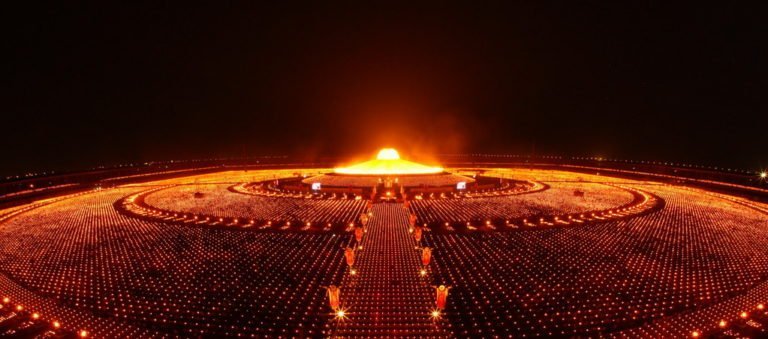Contenus
ToggleIn short
Māgha Pūjā (également écrit Makha Bucha Day) est le deuxième festival bouddhiste le plus important, célébré le jour de la pleine lune du troisième mois lunaire au Cambodge, au Laos, en Thaïlande, au Sri Lanka et le jour de la pleine lune de Tabaung au Myanmar. Il célèbre un rassemblement qui a eu lieu entre le Bouddha et 1 250 de ses premiers disciples, qui, selon la tradition, a précédé la coutume de la récitation périodique de la discipline par les moines.

Māgha Pūjā, the great gathering
On this day, Buddhists celebrate the creation of an ideal and exemplary community, which is why it is sometimes called Saṅgha Day, the Saṅgha referring to the Buddhist community, and for some Buddhist schools it is specifically of the monastic community. In Thailand, the Pāli term Māgha-pūraṇamī is also used for the celebration, meaning "to honor the full moon of the third lunar month." Finally, some authors have described this day as a Buddhist All Saints Day.
This is usually done with a motivation to improve in the cycle of existence. Monks and lay worshipers will hold processions, light candles, attend preaching and make food offerings, as well as perform Buddhist meditations and chants. Additionally, worshipers sometimes release animals from captivity. Additionally, devotees observe and reflect on the five Buddhist moral precepts on this day, including avoiding intoxicants.
Social networks
Today, Buddhists celebrate Māgha Pūjā. This is the first large gathering of 1250 disciples around the Buddha. This gave rise to the custom of recitation by monks. #mythology #myth #legend #calendar #maghapuja #Buddhism
Picture
